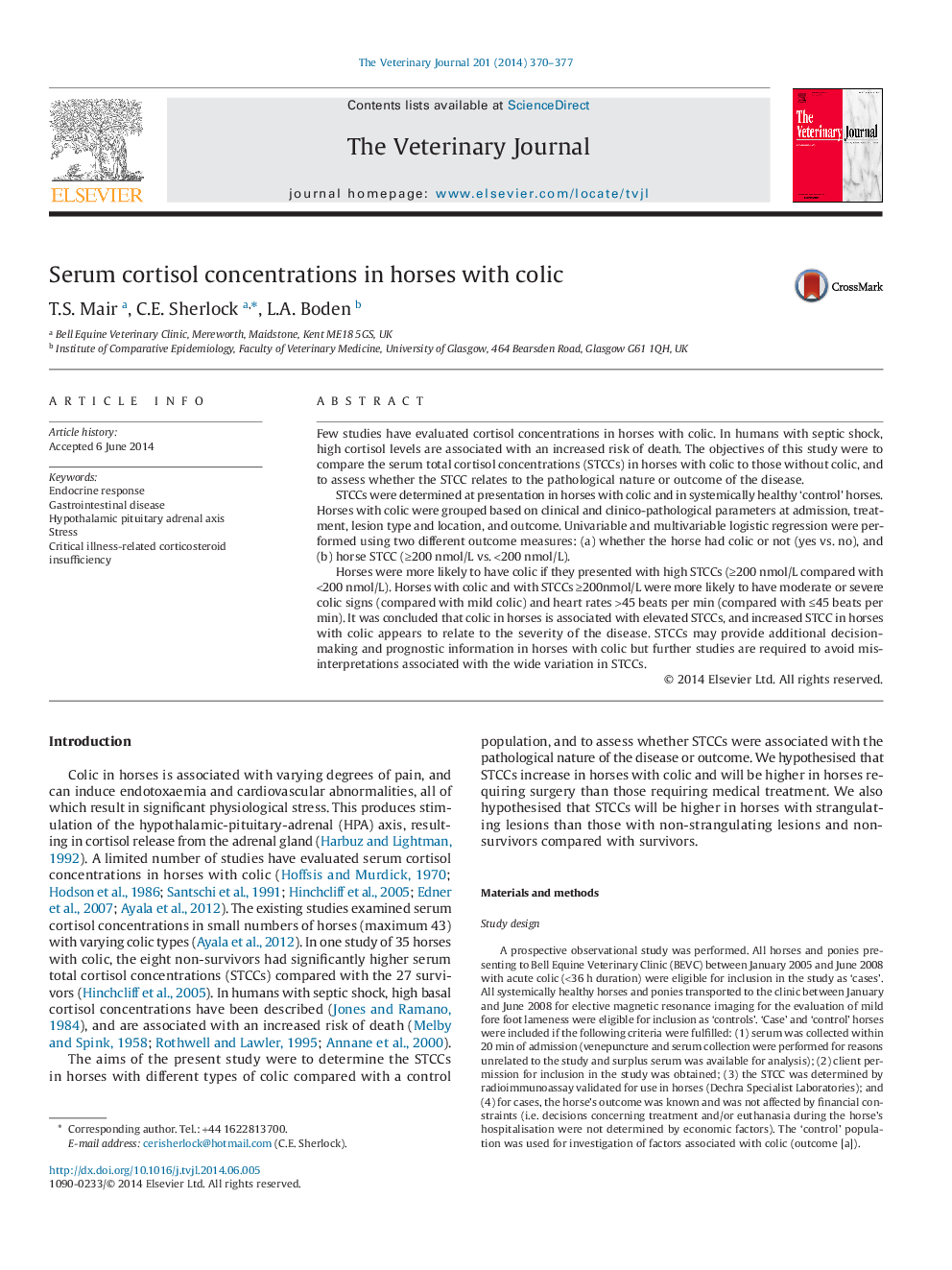| کد مقاله | کد نشریه | سال انتشار | مقاله انگلیسی | نسخه تمام متن |
|---|---|---|---|---|
| 5797985 | 1111766 | 2014 | 8 صفحه PDF | دانلود رایگان |
Few studies have evaluated cortisol concentrations in horses with colic. In humans with septic shock, high cortisol levels are associated with an increased risk of death. The objectives of this study were to compare the serum total cortisol concentrations (STCCs) in horses with colic to those without colic, and to assess whether the STCC relates to the pathological nature or outcome of the disease.STCCs were determined at presentation in horses with colic and in systemically healthy 'control' horses. Horses with colic were grouped based on clinical and clinico-pathological parameters at admission, treatment, lesion type and location, and outcome. Univariable and multivariable logistic regression were performed using two different outcome measures: (a) whether the horse had colic or not (yes vs. no), and (b) horse STCC (â¥200ânmol/L vs.â<200ânmol/L).Horses were more likely to have colic if they presented with high STCCs (â¥200ânmol/L compared with <200ânmol/L). Horses with colic and with STCCsââ¥200nmol/L were more likely to have moderate or severe colic signs (compared with mild colic) and heart ratesâ>45 beats per min (compared with â¤45 beats per min). It was concluded that colic in horses is associated with elevated STCCs, and increased STCC in horses with colic appears to relate to the severity of the disease. STCCs may provide additional decision-making and prognostic information in horses with colic but further studies are required to avoid misinterpretations associated with the wide variation in STCCs.
Journal: The Veterinary Journal - Volume 201, Issue 3, September 2014, Pages 370-377
